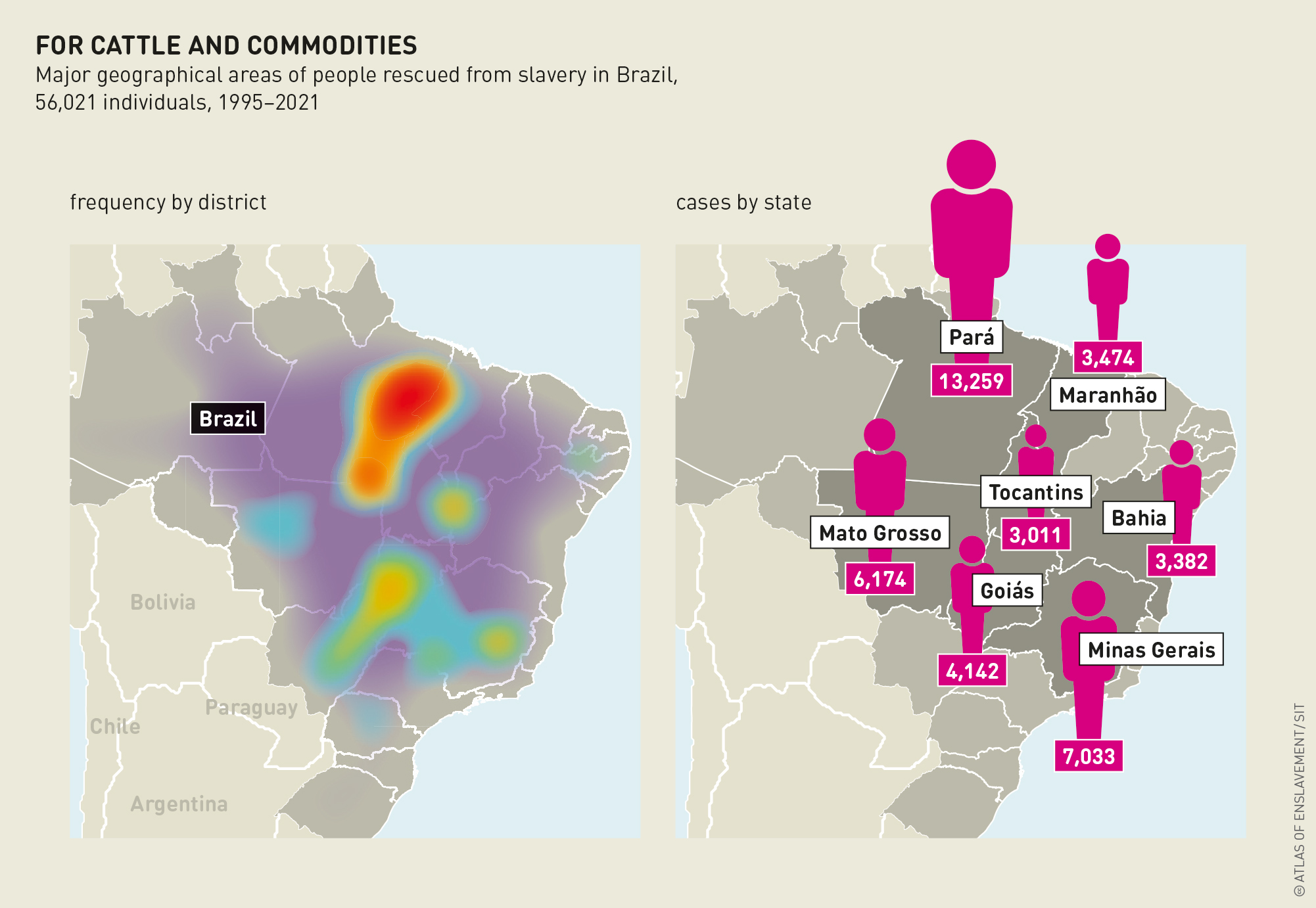Poverty and huge income disparities make people desperate. Tempted by the promise of a better life, many in Brazil are tricked by unscrupulous agents and employers, and find themselves trapped
as slaves. Lax enforcement makes it easy for the perpetrators.
Formally abolished by law in 1888, slavery – in its modern forms – still exists in Brazil. In 1995, the Brazilian state officially recognized this and has since taken a variety of legislative and institutional measures to combat slave labour on its territory. Nonetheless, translating measures into change on the ground remains a challenge.
The case of Trabalhadores Fazenda Brasil Verde vs. Brazil was the first case by the Inter-American Court of Human Rights to address the issue of contemporary forms of slavery. The decision deals with the practices of forced labour and debt bondage on a cattle ranch in the municipality of Sapucaia, in Pará in northern Brazil. Recruitment agents brought the victims to the farm with the promise of attractive wages. Upon arrival, they were confronted with extremely low or no wages, an insurmountable debt they were said to owe the rancher, a ban on leaving the ranch under threat of death, and a lack of decent food, shelter or sanitary conditions.

After a series of complaints about slave labour, labour inspectors and other state authorities inspected the ranch in 1989, 1993 and 1996, but without major consequences for the owner. In 1997, an inspection following a complaint by two workers who had escaped led to criminal proceedings against the recruitment agent, manager and ranch owner. The case against the owner was dropped after a financial contribution was made to a charitable cause. The cases against the others accused were time-barred, having been pending in court for almost 10 years. Three years later, another inspection, again after workers escaped, led to the rescue of more than 80 workers and civil and criminal charges against the owner. While the civil law case was settled by a judicial agreement, the criminal charges were not pursued after the records of the criminal proceedings disappeared.
The Inter-American Court found that the Brazilian state had violated the workers’ right not to be subjected to slavery, forced labour or human trafficking, among several other rights, and ordered a number of reparations. These included the payment of compensation to 128 victims, the reopening of the criminal investigations and proceedings in relation to the incidents of 2000, and the obligation to exclude crimes of slavery and analogous forms from the statute of limitations by amending the relevant criminal law provisions.
This case is not unique. Thousands of workers across Brazil are subjected to slave labour, and mechanisms to prevent such practices and hold perpetrators to account are ineffective. In the last 25 years, more than 55,000 workers have been rescued throughout Brazil. Until 2013, slave labour was employed mainly in rural sectors, such as ranching, coal mining and the cultivation of sugarcane, soybeans and cotton. Since then, instances of modern slavery have also occurred in urban areas, especially in the construction and garment industries.
The victims of slave labour in Brazil are mostly men of African descent who come from regions with high poverty and illiteracy rates. They are predominantly internal migrants who leave their homes for agricultural expansion areas or large cities in search of new prospects, or are lured by false promises from recruiting agents. They often do not identify themselves as being in a slavery-like situation, even though they are subjected to degrading conditions, compelled to work exhaustingly long hours, forced into debt bondage, or deprived of their documents. If they are released, they often return to a situation of social and economic vulnerability, so may again take up work that throws them back into the cycle of forced labour. Indeed, between 2003 and 2017, nearly 2 percent of the workers that were rescued from conditions akin to slavery found themselves in such conditions at least one more time. This is aggravated by the fact that except for 3 months of unemployment insurance, policies are lacking to provide social protection to the victims or to interrupt the slavery cycle.

While the Brazilian state has made legislative and institutional progress in the fight against slavery over the past 20 years, including the Special Mobile Inspection Group and the National Slave Labour Eradication Plans of 2003 and 2008, strengthening the responsible agencies is more necessary than ever. Since the Court decision, key public authorities have suffered severe budget cuts, including the Federal Public Ministry, one of the bodies responsible for prosecuting cases against perpetrators, and the Special Mobile Inspection Group. In fact, the budget for combating slave labour in Brazil was reportedly reduced by 41 percent in 2020, rmaking it lower than at any other point in the past 10 years.
Almost 5 years after the Court’s decision in the case of Fazenda Brasil Verde vs. Brazil, the Brazilian state is still far from implementing the decision and stopping such exploitation. Pressure from domestic and international civil society is still vital to eliminate modern forms of slavery in Brazil.
